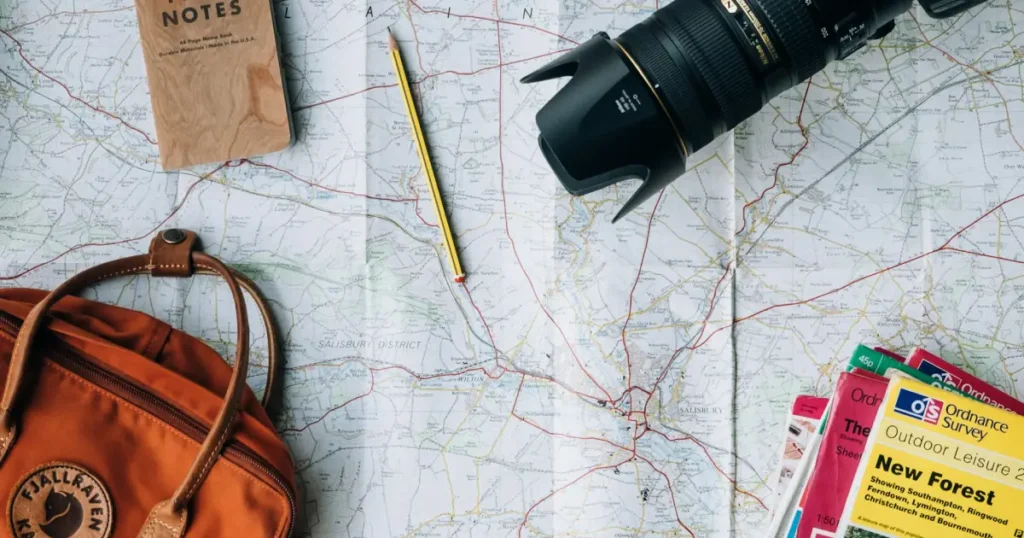The loan and credit culture in the United States often encourages travelers to spend beyond their means, especially when it comes to vacations. However, traveling within the country doesn’t have to break the bank. With smart planning and practical strategies, it’s possible to explore the U.S. affordably while still enjoying comfort and memorable experiences.
This article aims to present simple and effective ways to reduce travel expenses on domestic trips across the U.S. You’ll discover how to choose budget-friendly transport options, find affordable accommodations, and eat well without overspending—all while keeping your travel experience enjoyable and stress-free.
Affordable ways to travel within the U.S.

Transportation is often the biggest expense on domestic trips, but there are several ways to cut costs without sacrificing convenience. For shorter distances, consider taking buses like Greyhound or Megabus, which offer tickets at a fraction of airfare prices. If you prefer to fly, booking early and using price-comparison tools such as Google Flights or Skyscanner can help secure the best deals.
For those traveling by car, using fuel-saving apps like GasBuddy can help find the cheapest gas stations along your route. Carpooling or renting hybrid or electric vehicles can also reduce expenses and environmental impact.
Tips for smart transportation choices
Before choosing your mode of transport, analyze the total trip cost, including hidden fees such as luggage charges, tolls, or parking. For urban destinations, using public transportation, biking, or walking can drastically cut down on commuting costs. In cities like New York, Chicago, and San Francisco, subway passes or contactless payment systems make it easy to get around affordably.
Travelers looking for flexibility might consider combining different transport options—such as flying one way and returning by train or car rental. This hybrid approach can optimize both time and budget, especially for trips covering multiple cities or states.
Saving on lodging without sacrificing comfort
Accommodation can quickly become one of the most expensive parts of any trip. Fortunately, there are many alternatives to traditional hotels. Platforms like Airbnb and Vrbo offer a wide range of affordable stays, from shared apartments to entire homes, often cheaper than hotels in tourist areas.
Another great tip is to look for loyalty programs or cashback deals offered by booking platforms such as Booking.com or Expedia. These programs often grant discounts, upgrades, or free nights after several stays.
Eating well on a travel budget
Food is another area where expenses can escalate quickly, but with a few simple adjustments, it’s easy to eat well and save. Opt for accommodations with kitchen access to prepare some meals yourself, reducing the need for restaurants.
When eating out, look for local diners, food trucks, and lunch specials instead of high-end restaurants. Apps like Yelp and Google Maps can help you find well-rated, budget-friendly spots. Carrying snacks and reusable water bottles can also cut daily expenses and reduce waste while traveling.
Smart meal planning while exploring
Plan your meals according to your itinerary. For example, enjoy a hearty breakfast where you stay to reduce lunch spending, or split dishes when dining out. Many cities offer farmers’ markets where you can buy fresh local food at great prices.
Lastly, avoid impulsive purchases at tourist spots—coffee shops and attractions often charge premium prices. By budgeting for meals in advance and prioritizing local, authentic options, travelers can keep their food expenses low while fully enjoying the culinary diversity of the U.S.
Travel more, spend less: the art of mindful tourism
Traveling within the U.S. doesn’t have to drain your finances. By combining smart planning, flexibility, and digital tools, you can explore more destinations with less money. Each small saving—on transport, lodging, or meals—adds up to a more sustainable and fulfilling travel experience.
Ultimately, mindful tourism is about making intentional choices that align with your budget and values. Whether it’s taking a road trip across states or exploring nearby cities, financial awareness ensures that every journey is enjoyable, affordable, and rewarding.
